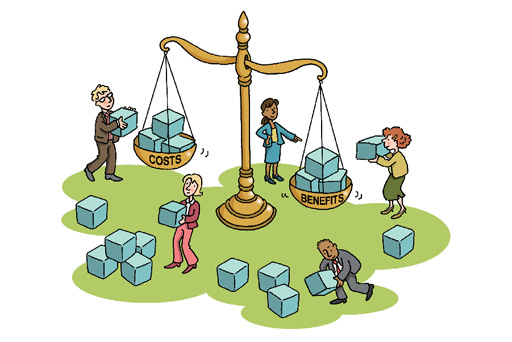2.2.2 Microsystems and service improvement
The microsystem model you have been exploring implies certain key questions to assess value and to map possible change:
- What demands are being placed on the microsystem, and how is this changing?
- What demands are being placed on the microsystem, and how is this changing?
- How can the abilities of those working in the microsystem to work in new ways be channelled to adapt to these changing demands?
However, simply looking at demand doesn’t help to address public value on its own. Just because a service is demanded does not, in itself, mean that it is providing public value. So demand is a starting point but not an end-point in itself. It is also useful to work out the public value goal of the microsystem, and then think about demand in that light. Leadership involves being able to ask good questions and not just accept the status quo.
These questions enable those leading a microsystem to evaluate inputs and activities, and to identify what really contributes to the service and how it might be improved. By implication, the challenge is also to identify activities or parts of activities that are unnecessary.
As you saw earlier, the public value perspective is useful in clarifying the different expectations, and particularly the values, of a variety of stakeholders which may be put on your microsystem, alongside considering what your microsystem adds to the public sphere. It provides a basis for you and your colleagues to consider which bundle of expectations you should be meeting, and why different aspects of this bundle matter to different groups.
You have probably noticed, in thinking about value, that some stakeholders – typically funders – might appear to be more focused on improving value in terms of minimising costs or getting the best use of resources. Others – perhaps user groups – may be more interested in maximising the benefits that can be achieved by using your service (or users may be concerned to avoid using your service altogether if you are a regulatory service). Considering the views of different stakeholders, as the public value perspective encourages you to do, will of course tell you something about which direction to go in, how much to prioritise keeping costs down, which benefits should be pursued, and where change or innovation should be encouraged in your service.
Measuring public value
You’ve been asked to think in some depth about what value means, and what improving value might mean, from the different perspectives of different groups and stakeholders. But how can public value be assessed or measured? How is it possible to measure value so that you know you are improving it? Given the complex and contested nature of value, you will not be surprised to hear that unfortunately there is no simple or standard way to assess it. Let’s go back to the definition of public value: what the public value, and what adds value to the public sphere. The public may value particular activities in your service (though different stakeholders may prioritise them differently), and they are likely to value efficiency, effectiveness, accountability, equity and probity in your organisation, including in the microsystems.
There are a number of quantitative measures of some of these elements – for example, financial measures, measures of time taken to provide a service, or user-satisfaction statistics.
Other elements of your service may be much more difficult to measure – you may have to weigh them up rather than measure them. How can you decide the value of certain preventative actions? How can public confidence be assessed? You may need to engage in debates and discussions with various stakeholders to try to weigh up what is important and what should be prioritised. This is part of what Benington (2015, p. 29) calls ‘public value as a contested democratic practice’.
Activity 2
Can you identify any particular activities within your working environment where there appear to be opportunities to make improvements in order to gain more benefits, reduce costs or both? Where do you think the improvements in benefits or costs might come from? What initial ideas do you have as to how these improvements could be measured?

